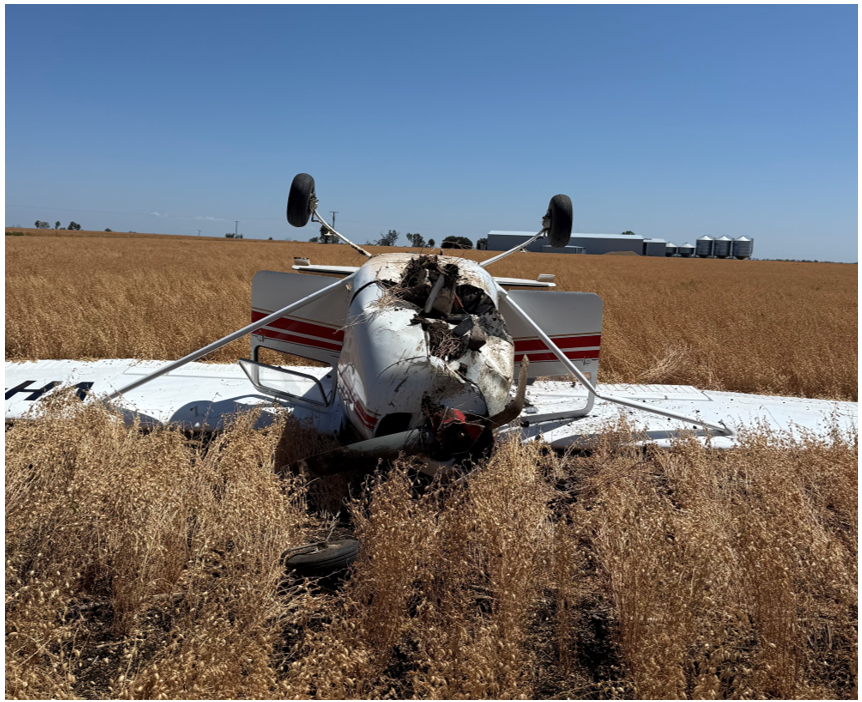What happened
On the afternoon of 23 September 2025, a Cessna 172 was conducting private runway inspections at multiple farms near Blackwater, Queensland.
During a low level overfly of one such runway strip at about 200 ft AGL, the aircraft began to lose height. When the pilot attempted to add power, the aircraft did not respond as anticipated, resulting in a loss of control. The aircraft collided with the ground, bounced and came to rest inverted, resulting in substantial damage to the propellor, main landing gear, right wing strut, engine cowl and vertical stabiliser (Figure 1).
The pilot reported that possible contributing factors to the accident included a crosswind from the south and the warmer weather, with the aircraft not having enough lift as power was applied.
Figure 1: Cessna 172H inverted after landing

Source: Operator
Safety message
This incident highlights that low-level flying operations have a lower margin for error with minimal time to recover the aircraft in the event of a loss of control.
Low-level flying, particularly at private and unregulated airstrips, is inherently high risk and therefore requires effective risk management. This should include a risk assessment to consider the hazards common to the type of operation, as well as specific to the location, to develop mitigations and reduce the chance of an accident occurring.
About this report
Decisions regarding whether to conduct an investigation, and the scope of an investigation, are based on many factors, including the level of safety benefit likely to be obtained from an investigation. For this occurrence, no investigation has been conducted and the ATSB did not verify the accuracy of the information. A brief description has been written using information supplied in the notification and any follow-up information in order to produce a short summary report, and allow for greater industry awareness of potential safety issues and possible safety actions.


